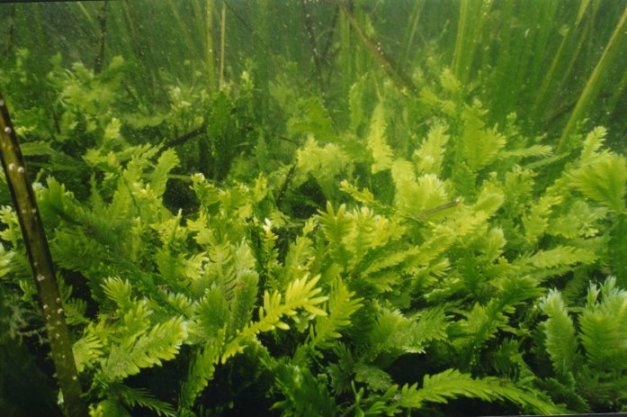 It is amazing how little we know about our ocean’s ecosystems! We know that corals can defend themselves against other corals, invertebrates, and to a certain extent fish, but a recent study has found that corals may have another attacker to defend against. Algae has always been a problem with coral and coral reefs as a whole. The rapid growth and expansion of some macro algae will eventually choke out specific corals, killing them in a matter of days. Taxifolia a species of Caulerpa, began invading parts of the West Coast years ago, choking out everything in it’s path as it spread. Normally, we think of the tangling tendrils of green smothering the corals in darkness as they take over, slowly starving them of vital light and nutrients. However, a recent study performed by a professor and his graduate student at Georgia Tech have found algae that can kill coral on contact.
It is amazing how little we know about our ocean’s ecosystems! We know that corals can defend themselves against other corals, invertebrates, and to a certain extent fish, but a recent study has found that corals may have another attacker to defend against. Algae has always been a problem with coral and coral reefs as a whole. The rapid growth and expansion of some macro algae will eventually choke out specific corals, killing them in a matter of days. Taxifolia a species of Caulerpa, began invading parts of the West Coast years ago, choking out everything in it’s path as it spread. Normally, we think of the tangling tendrils of green smothering the corals in darkness as they take over, slowly starving them of vital light and nutrients. However, a recent study performed by a professor and his graduate student at Georgia Tech have found algae that can kill coral on contact.
Professor Mark Hay and his student, Douglas Rasher, tested algae commonly found algae from the Caribbean and Pacific Ocean. They used a Porites species from each region as a hardy test subject. The algae was placed next to the corals and left alone for a total of 20 days. They checked interactions on days 2, 10, and 20. There were a wide range of results, but on the second day some corals that were in contact with the algae had bleached and died! Other species took the full 20 days to show any effects. Some corals were not affected by the algae at all. Similar control set-ups were made using plastic plants in one and just corals (with no algae) to support their results that the algae was the cause of the damage.
Next, they experimented with the various biochemicals from the algae. They found that the chemicals did have detrimental effects, only when coming into direct contact with the coral. This may suggest that the chemicals are not water soluble. They found that 5 out of the 7 algae tested from the Caribbean, and 3 of the 8 from the Pacific, caused the corals to bleach.
The true extent of how much algae is contributing to the bleaching of corals around the world is unknown. However, this study shows that it doesn’t take very much for fast growing nuisance algaes to bleach and kill coral. Herbivorous fish such as blennies, tangs and surgeons are there to keep the reefs free from harmful algae. Removing too many herbivores from the reef can lead to increased algae growth amongst corals. The combination of warmer water, more nutrients, and possible overcollection herbivores may paint a grim picture for many reefs when it comes to these prolific plants.
Read the full article on the research conducted here.
Until next time,
Cory
 That Fish Blog – Aquarium Advice and Information
That Fish Blog – Aquarium Advice and Information

